The odds are now increasing that the hurricane season 2021 should begin before the official start on June 1st. The non-tropical disturbance formation is being monitored to the east of Bermuda and could soon become the first named storm in the Atlantic Ocean – Subtropical Storm Ana.
We also take a closer look at the hurricane season 2021 prediction, please follow in-depth discussion below.
Over the last 15 years, such a pre-season activity isn’t too unusual, actually. If we just remember last year, there were two tropical storms forming before June first, Arthur and Bertha. About half the recent years have seen the early start of the hurricane season.
This has also prompted the National Hurricane Center to start with their tropical outlooks on May 15th instead of at the official start date one would expect.
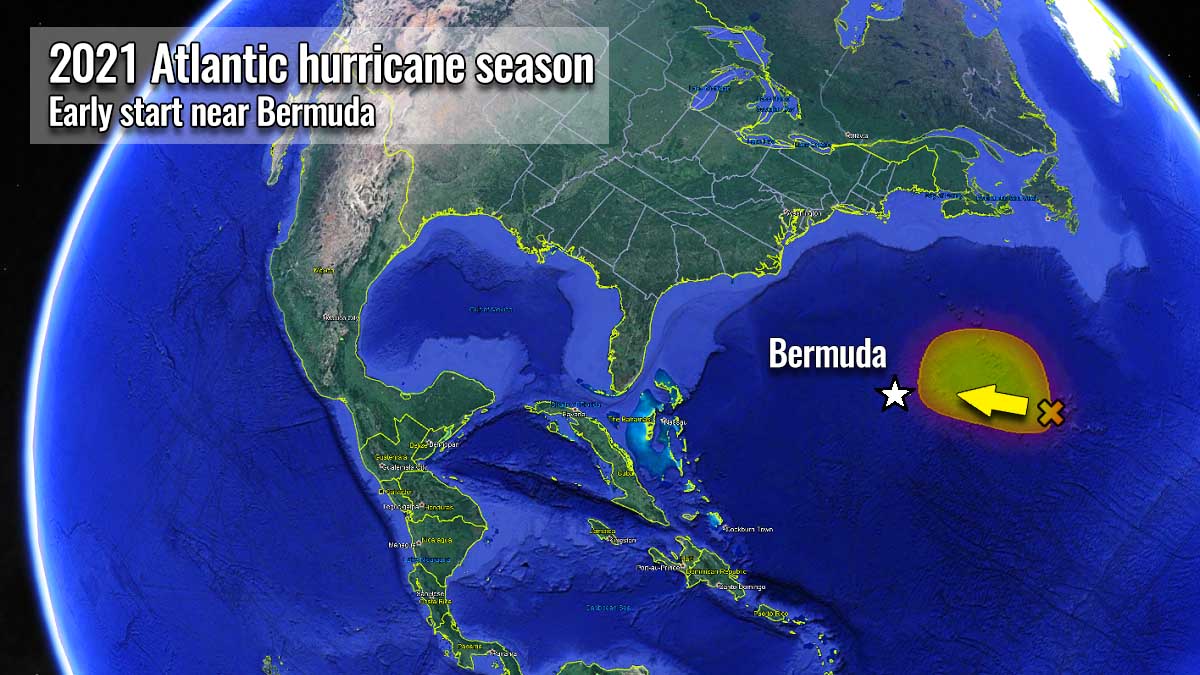
Below is the recent animation of the forming depression, including various satellite channels (water vapor, visible and infrared scans), revealing a tightening core spinning near the center of the subtropical low. Further organization of the convection would bring a depression formation and then potentially also the first named system of the hurricane season 2021.
If/When subtropical storm Ana eventually forms, it will be rather short-lived, spinning to the east-northeast of Bermuda. Nevertheless, a Tropical Storm Watch has already been issued for Bermuda, which is to cover the potential for sustained winds reaching 35 knots and seas exceeding 12 feet offshore on Friday.
As far as statistics go, typically the first named storm forms in early July in the Atlantic, according to the NHC. While the first hurricane usually forms in mid-August. The three-month period – August, September, and October – being the most active months for tropical storm and hurricane activity across the Atlantic Basin.
ATLANTIC BASIN WATERS ALREADY WARMER THAN AVERAGE
The Atlantic sea waters around the position of the non-tropical disturbance are roughly around 20-23 °C, which is relatively low compared to the tropical region further south. But those are still well above-average for May over this part of the Atlantic. The position of the developing disturbance is marked with the white circle.
Basically, the whole Atlantic basin, including the Caribbean and the Gulf of Mexico already has water temperatures quite warmer than normal for this time of the year. This also correlates well with what is typically seen prior to active Atlantic hurricane season.
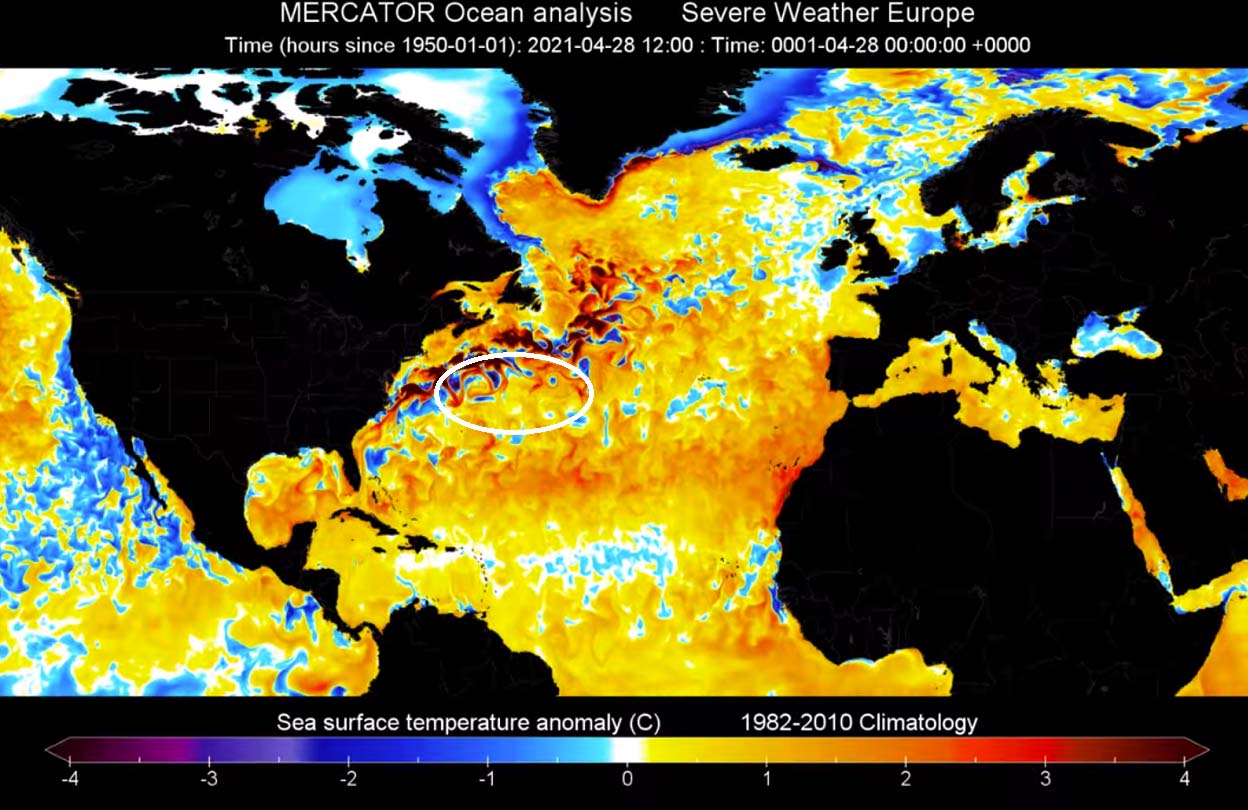
Notice also that the sea temperatures in the region known as MDR (main development region – between Africa and the Caribbean Sea) are much warmer than average. This hints that upcoming tropical cyclone formation will easily fuel from the very warm ocean waters. Often with the rapid strengthening of tropical systems.
The Atlantic basin covers the area which includes the entire Atlantic Ocean, the Gulf of Mexico, and the Caribbean Sea.
This summer, the La Nina global weather pattern slides into a neutral phase, and these already above-average and warming Atlantic sea temperatures could spark a very active hurricane season. Very warm seawater conditions are expected to continue throughout this year, with ENSO conditions remaining neutral through the peak months of the hurricane season.
SUBTROPICAL STORM ANA COULD FORM OVER THE WEEKEND
According to the National Hurricane Center, a non-tropical low-pressure system located about 650 miles east-northeast of Bermuda. It is moving northward, and recent satellite wind data indicate that the system already has some gale-force winds present.
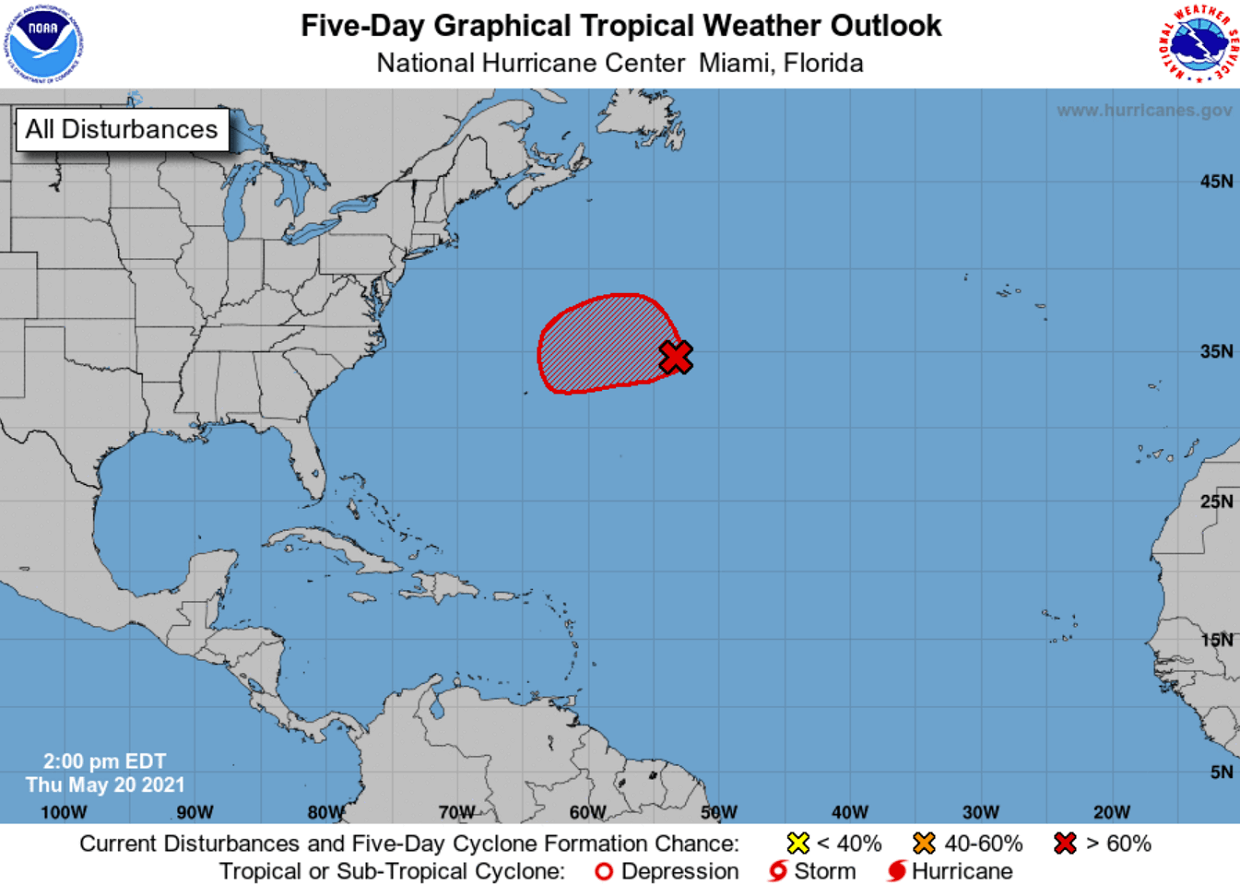
The low is expected to turn westward and west-southwestward over much warmer waters through Thursday night into Friday, likely gaining additional strength. It could become a subtropical cyclone near and to the northeast of Bermuda on Friday.

The NHC is giving this disturbance an 80 % chance that it becomes subtropical depression through the next 48 hours. And also a 90 % chance it becomes a subtropical storm over the next five days.
After that time, the system is expected to move toward the north and northeast into a much cooler and unfriendly oceanic environment for further strengthening by late Sunday into Monday. Therefore it would gradually weaken into early next week while moving towards the northeast across the North Atlantic as an extratropical (post-tropical) storm.

As we can see, the subtropical storm Ana could soon develop east of Bermuda in the Atlantic, before the hurricane season 2021 even starts. If it indeed forms, this would be the seventh consecutive year with a named tropical or subtropical storm forming before the 1st of June. In recent years, the other two storms named Ana forming before the official start of the season were observed in April 2003 and May 2015.
Note: In 2020, there were even two systems that formed before June 1st – Tropical Storm Arthur and Bertha during the second half of May. Andrea in 2019, Alberto in 2018, and Arlene before the start of hurricane season 2017.
Officially, the Atlantic hurricane season starts on June 1st and extends until November 30th.
WHAT IS THE LATEST ATLANTIC HURRICANE SEASON 2021 PREDICTION?
The international committee of the World Meteorological Organization (WMO) is officially maintaining tropical cyclone names and has designated 21 storm names for the Atlantic hurricane season 2021. The hurricane name lists are used in rotation and re-cycled every six years. So the list used in the 2021 year will be used again in 2027.
Below are the 21 names, starting with Ana and ending with Wanda. The Atlantic tropical cyclones had been named from lists originated by the National Hurricane Center, and are in use since 1953.
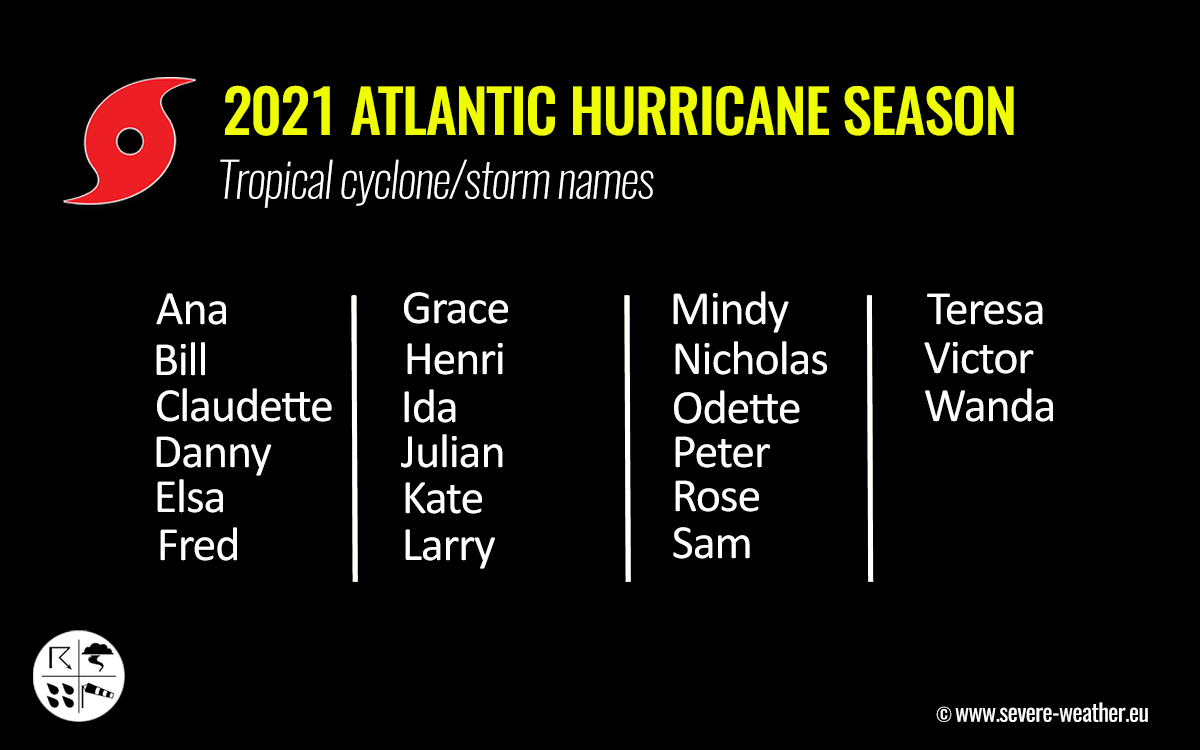
As we noted in our initial forecast discussion about a month ago, the Colorado State University (CSU), as well as many others, is predicting an above-average number of tropical storms and hurricanes for 2021.
Another, probably the most concerning part of the forecast for the upcoming hurricane season is very high, near 70 percent, chance of a major hurricane landfall along the United States coastline, and nearly 60 percent for the Caribbean. A typical season has about fifty-fifty probability of the US mainland getting a significant impact.
So this is an important fact that needs to be considered and be hurricane aware of as we enter the new Atlantic hurricane season in less than two weeks from now.
The CSU forecast also includes the ACE index which is forecast to be very high again this year. ACE is an abbreviation for Accumulated Cyclone Energy. This means, in other words, how much energy storms could produce. The CSU forecast predicts an ACE of 150, which is well above the average for a hurricane season.
What Is the Accumulated Cyclone Energy (ACE) index?
The metric, that is used to express the energy used by a tropical cyclone during its lifetime, is known as the Accumulated Cyclone Energy (ACE) index. It is the calculation of the tropical cyclone’s maximum sustained winds every six hours. The number is then multiplied by itself to generate the values.
And then, the total sum of these values is calculated to get the total ACE value for a tropical storm or a hurricane and can either be divided by 10,000 to make them more manageable or added to other totals in order to work out a total for a particular group of storms.
The calculation itself was originally created by William Gray and his associates at Colorado State University. At first, they developed the Hurricane Destruction Potential index, which took each hurricane’s maximum sustained winds above 65 knots (120 km/h = 75 mph) and multiplied it by itself every six hours.
This index was subsequently tweaked by the NOAA in 2000 that it now includes all tropical cyclones, with winds above 35 knots (65 km/h = 40 mph) and was finally renamed to an Accumulated Cyclone Energy we use now.
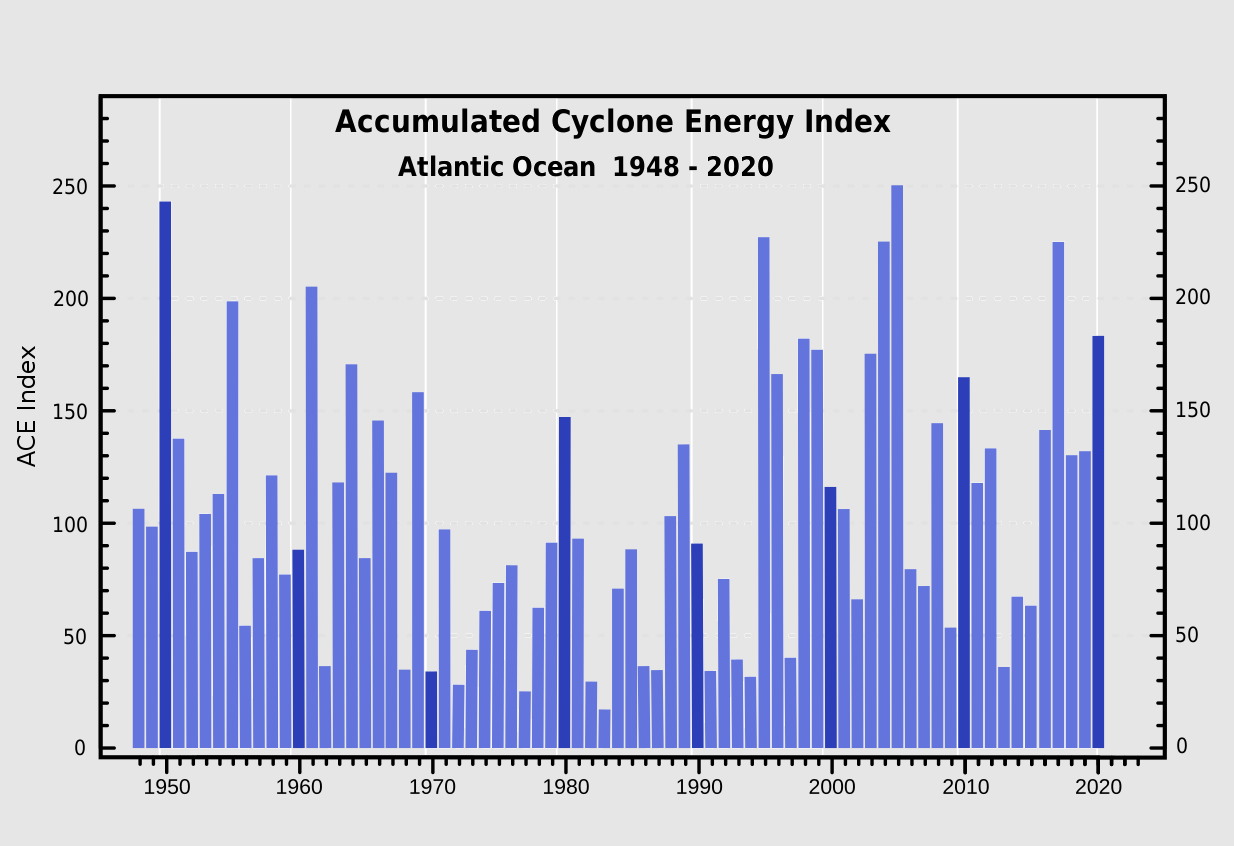
Above: The Accumulated Cyclone Energy for the Atlantic Ocean over the last 70+ years. We can notice how the recent 5 years were all calculated into an above-normal value of the ACE index, which is 111. Within the Atlantic Ocean, the NOAA uses the ACE index to classify hurricane seasons into four categories.
Extremely active – ACE index above 152.5
Above-average – ACE index above 111
Near-average – ACE index between 66 and 111
Below-normal – ACE index below 66
If we remember the record-breaking 2020 Atlantic hurricane season by its numbers, the ACE ended up at 184.5, so quite well above the threshold for the ‘extremely active’ category as well. This also placed 2020 into the Top-10 Atlantic hurricane seasons based on the Accumulated Cyclone Energy index.
The record holder hurricane season is still 1933, with an ACE of more than 258. 2005 hurricane season, the one with the 2nd most named storms after 2020, also ended up extremely high with the final ACE index of 250. But even the 2020 hurricane season had a record-breaking number of tropical cyclone formations, it doesn’t necessarily mean the Accumulated Cyclone Energy would be off the charts as well.
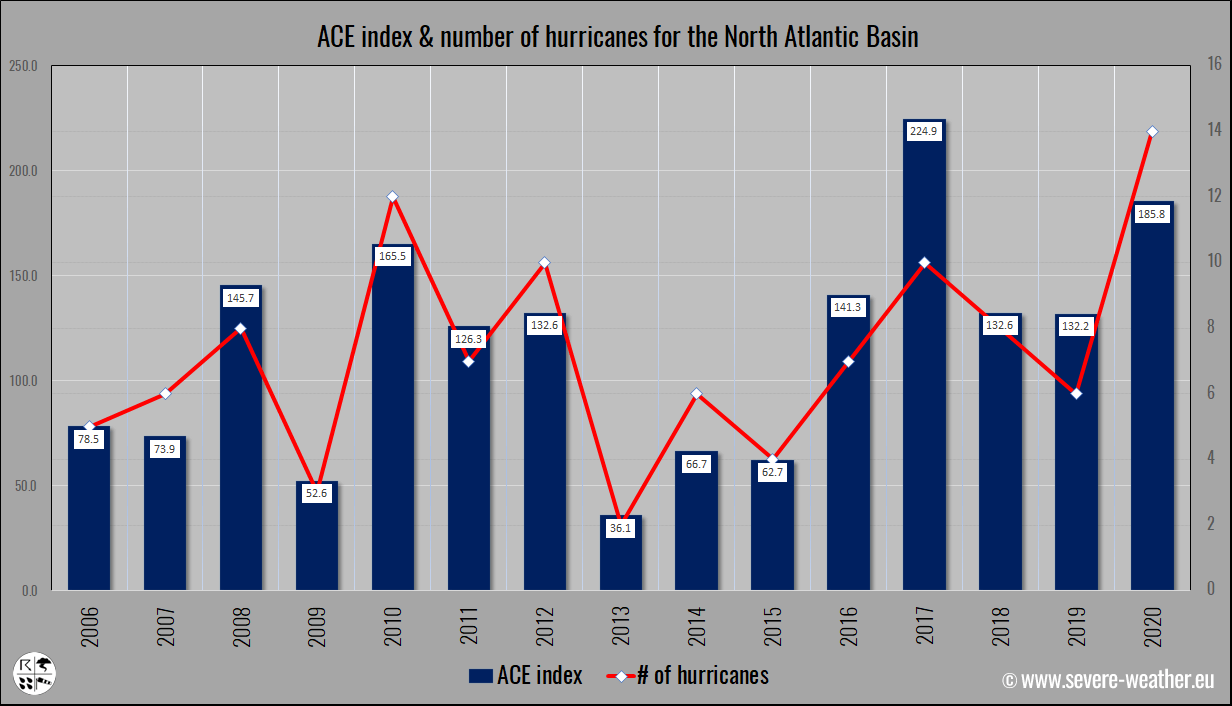
Above: Recent 15 hurricane season ACE records and the related number of hurricanes in that particular year.
The closest Atlantic hurricane season, fitting into an ‘extremely active’ category in recent years can be found in 2017.
As we discussed in our recent Atlantic Ocean discussion, much of the Atlantic Basin is already quite warmer than average. A large part of the Gulf of Mexico is also warmer than average, and so is the tropical central and western Atlantic region. This actually correlates well with what is typically seen prior to active Atlantic hurricane season.
According to dr. Phil Klotzbach, the Colorado State University (CSU) predicts that all the parameters that are typically monitored during an Atlantic hurricane season are likely to be above average again this year. The CSU University forecast around 80 named storm days (that is 35 % above the long-term average), 8 hurricanes (about 25 % above average), and 4 major hurricanes (48 % above average).
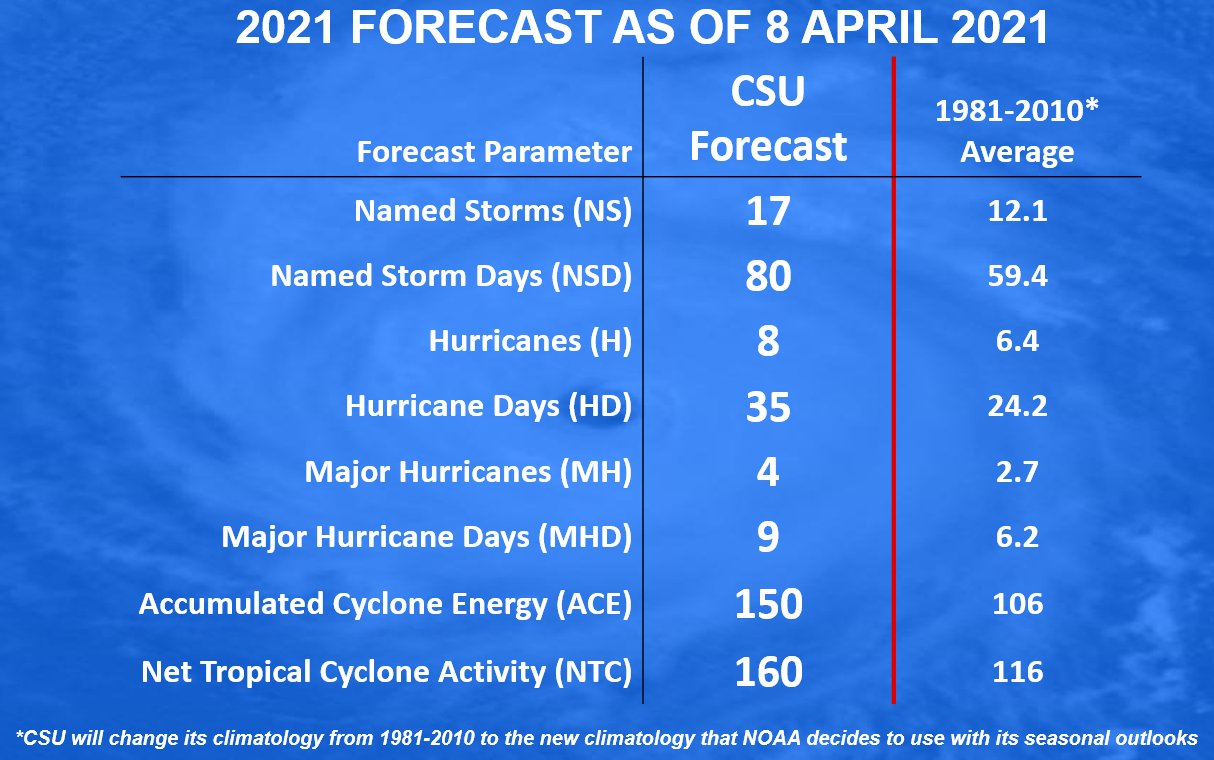
While the Accumulated Cyclone Energy (ACE) could end up around 150, that is about 42 % above the normal for the climatological period between the 1981 and 2010 years.
NOAA ALSO CALLS FOR ABOVE-NORMAL HURRICANE SEASON
Just this week, the NOAA has officially released its seasonal hurricane forecasts for the Atlantic basin. The forecast hints at an above-normal season very likely in 2021, with 13-20 named storms, up to 10 hurricanes. And also 3-5 major hurricanes with an ACE index between 110 % and 190 % compared to the 1951-2020 median value.
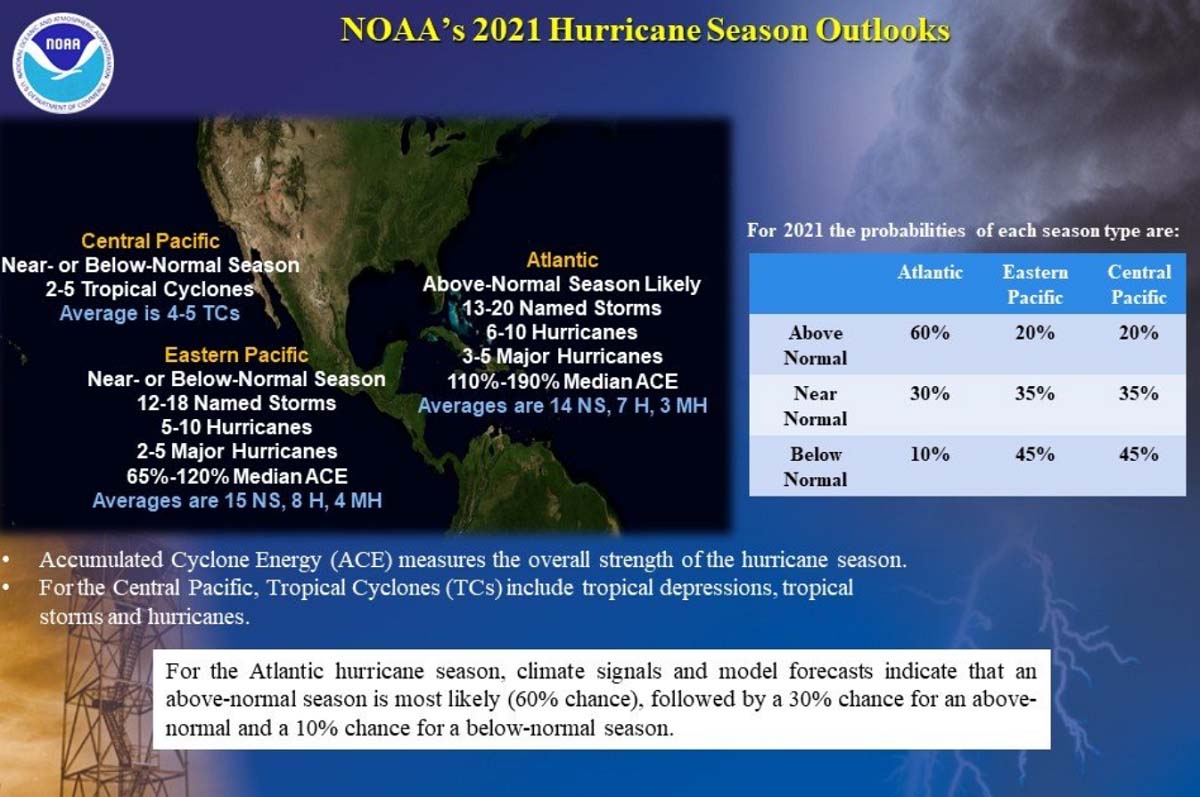
So the NOAA’s Climate Prediction Center is predicting yet another above-normal hurricane season in 2021, with a 60 % chance. and only a 10 % chance it will be a below-normal season this year. So like 2020, we could be in for a very active and dangerous hurricane season again, but for now, NOAA forecasters do not predict this year could rival the 2020 record-breaking season.
NOAA warns, that “Now is the time for communities along the coastline as well as inland to get prepared for the dangers that hurricanes can bring. The experts at NOAA are poised to deliver life-saving early warnings and forecasts to communities, which will also help minimize the economic impacts of storms.”
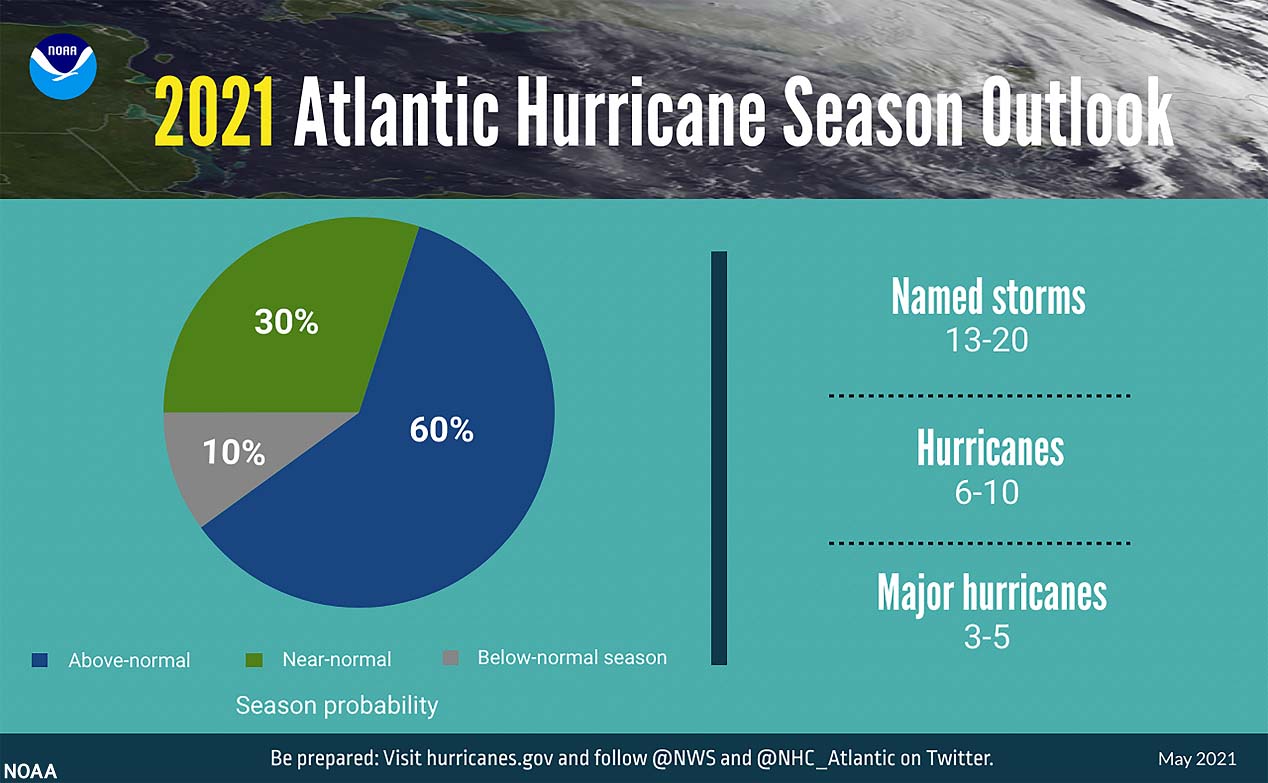

Note: Our team will be actively monitoring the tropical region activity worldwide, including the Atlantic Basin systems and tropical cyclones that are likely to affect both the United States and Europe again this year. Stay tuned for further follow-up posts, forecast discussions, and nowcasting during the coming weeks and throughout the entire Atlantic hurricane season 2021.
***The images used in this article were provided by Weathernerds, Tropical Tidbits, and Windy.